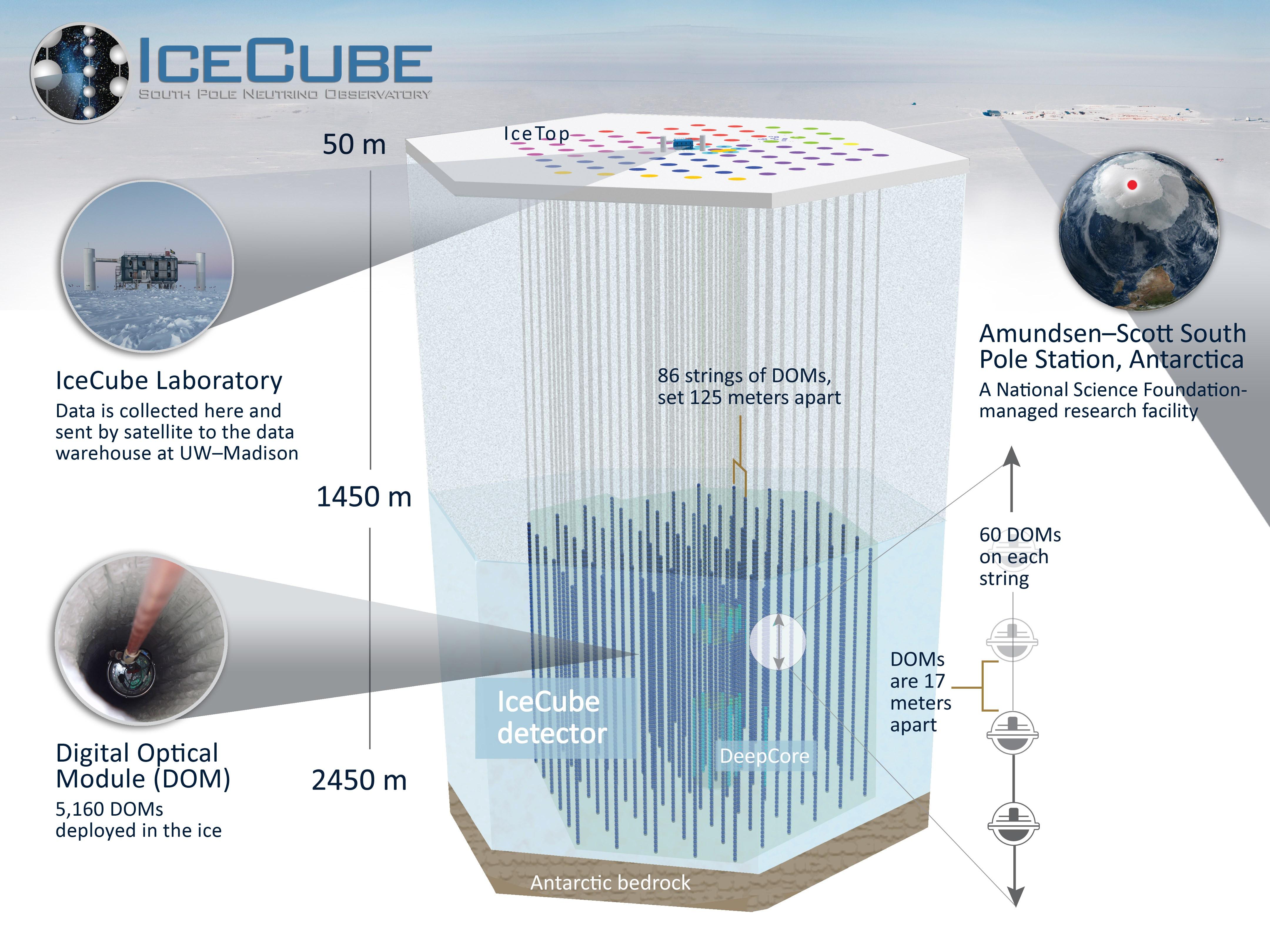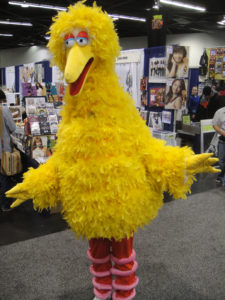We've used our Parkes telescope to help trace the origin of the Big Bird neutrino to a galaxy 9.1 billion light years away.

The IceCube Neutrino Observatory. Credit: IceCube Collaboration
Every second trillions of neutrinos pass through your body at near light speed without you noticing. Although they’re the most abundant particles in the universe, their capture has eluded scientists for decades.
Until now.
Today, our scientists were part of an international team that has published the breakthrough discovery of neutrinos in the journal Nature Physics.
How did they do it?
The fact that neutrinos have such a tiny mass, travel at almost the speed of light, and very rarely interact with their surroundings drove scientists to go to some pretty extraordinary lengths to build a piece of equipment that not only detects and measures their strength, but can also help determine where they came from.
IceCube (no, not THAT Ice Cube)

Ice Cube, the rapper.Image Eva Rinaldi/Flickr

The IceCube Laboratory at the Amundsen-Scott South Pole Station, in Antarctica. Credit: Erik Beiser, IceCube/NSF
That equipment is the IceCube Neutrino Observatory, a really, really big cube of ice (about one cubic kilometre) at the South Pole that’s filled with sensors designed to catch the extremely brief flashes of light emitted when a neutrino interacts with the ice as it pass through Earth. IceCube’s construction involved hot water being used to drill 86 60cm diameter holes in the Antarctic ice, before strings of regularly spaced light detectors were lowered two and a half kilometres down into the ice.
Big Bird

Image: The Conmunity – Pop Culture Geek/Flickr
In 2012, IceCube detected the most powerful neutrino ever recorded, which scientists affectionately dubbed Big Bird.
“Neutrinos are so rare that the team chose to name them after Sesame Street characters. The one we’ve identified is called Big Bird,” said our scientist Dr Phil Edwards, who led the Australian part of the team.
So far there have only been three neutrinos powerful enough to receive the full Sesame Street treatment, with Big Bird joining Bert, 2011, and Ernie, 2012.
Astronomers have known for some years that stars, like our Sun, produce low energy neutrinos in their nuclear reactions,
so this intensely powerful neutrino is believed to have originated in another galaxy.
The challenge for the astronomers was to use the data collected by IceCube, including the direction the neutrino passed through the ice, to try to find out where Big Bird came from.
Radio telescopes to the rescue
Unfortunately IceCube can’t pinpoint the arrival direction of a neutrino very accurately, so in order to find out more precisely where Big Bird came from the team took this data and compared it with previous observations taken with radio telescopes.
Our Parkes radio telescope has been catalogueing galaxies for many years now, and one galaxy that Parkes had observed in 1964 really stood out.
The research team found that PKS 1424-418 (PKS because it was first catalogued by the Parkes telescope, with the numbers being a celestial equivalent of the latitude and longitude of the source’s position in the sky) not only had a location consistent with IceCube’s estimated arrival direction, but was brightening dramatically at radio wavelengths at the time the neutrino was detected.
The team has now been able to confirm with only a 5% margin of error that Big Bird most likely originated from this galaxy.
Because PKS 1424-418 is so far away, it took Big Bird 9.1 billion years to reach Earth. And as the universe is 13.7 billion years old, the neutrino was emitted when the Universe was about one third its present age.
Why is this important?
Much like the recent discovery of gravitational waves, scientists believe that detecting neutrinos will allow them to probe the universe in new ways, shedding light on the nature of dark matter, supermassive black holes and other cosmological mysteries.
“Intervening clouds of gas and dust make it difficult for existing telescopes to observe close to the centre of other galaxies,” Dr Edwards said.
“As neutrinos travel straight through this intervening matter, we could now see the development of neutrino telescopes that would offer a new window on the universe. They are a great addition to the astronomer’s toolkit.”
Other telescopes based in Australia involved in the project included those run by NASA and the University of Tasmania, and they were also joined in this global search by telescopes from South Africa, New Zealand, Chile, and Antarctica.

